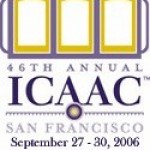October 3, 2006 (AIDSmeds)—A new study suggests that 48 weeks of treatment with Trizivir® is comparable to a protease inhibitor-based regimen. However, according to the results reported last week at the 46th Conference on Antimicrobial Agents and Chemotherapy (ICAAC) in San Francisco, Trizivir alone still appears to be of questionable effectiveness for those beginning therapy with viral loads higher than 100,000.
Trizivir, a fixed-dose combination (FDC) tablet containing zidovudine, lamivudine, and abacavir, is approved by the U.S. Food and Drug Administration for use with or without other HIV drugs. In other words, it can be used as a stand-alone regimen by patients starting therapy for the first time, without having to add other HIV drugs.
The U.S. Department of Health and Human Services (DHHS), however, doesn’t strongly support the use of Trizivir alone. In their Guidelines for the Use of Antiretroviral Agents in HIV-1-Infected Adults and Adolescents, DHHS stresses that Trizivir used without other HIV medications is only recommended when protease inhibitor (PI) or non-nucleoside reverse transcriptase inhibitor (NNRTI)-based regimens cannot be used. This recommendation is based on data from previous Trizivir studies indicating that it is less effective than PI- or NNRTI-based regimens, especially for those starting therapy with viral loads above 100,000.
The new clinical trial, called the ACTION study, compared twice-daily Trizivir to twice-daily Combivir® plus once-daily Reyataz®. Patients who experienced an allergic reaction to the abacavir in Trizivir were permitted to switch to a combination containing Viread® (tenofovir) plus Combivir. For patients who experienced jaundice caused by increased bilirubin levels associated with Reyataz, a switch to Lexiva® (fosamprenavir) was permitted.
Two-hundred seventy eight patients, all of whom were beginning therapy for the first time, took either Trizivir or Reyataz/Combivir. Approximately 20% of the study participants were women, with patients entering the study with an average viral load of 66,000 and an average CD4 (T4) cell count of 268.
When looking at all study participants – including those who switched therapies during the trial – 64% of those originally randomized to take Trizivir and 63% of those originally randomized to take Reyataz had viral loads below 400 after 48 weeks of treatment.
Approximately 75% of those in the Trizivir group completed 48 weeks of treatment without switching, compared to 70% of patients in the Reyataz/Combivir group. In a strict study analysis that counted these switches as treatment failure, 62% in the Trizivir group and 59% in the Reyataz/Combivir group had viral loads below 400 after 48 weeks of treatment. The differences between the two groups in this regard were no statistically significant, meaning that it could have been due to chance.
Strangely, the study either did not evaluate – or did not report – the percentage of patients with viral loads below 50, arguably the most important cut-off when evaluating treatment responses.
As for CD4 cell count changes, the average increase was 147 after 48 weeks of treatment, with no statistically significant difference between the two treatment groups.
The study authors concluded that, at least for patients with pre-treatment viral loads of less than 100,000, Trizivir is “not inferior” to a regimen of Reyataz and Combivir. It should be pointed out, however, that the percentages of patients with viral loads below 400 were low – compared to results from studies evaluating Norvir-boosted protease inhibitors, for example – using Trizivir or Reyataz/Combivir, suggesting that neither regimen in this study performed well.
ICAAC: Trizivir vs. Reyataz/Combivir




Comments
Comments